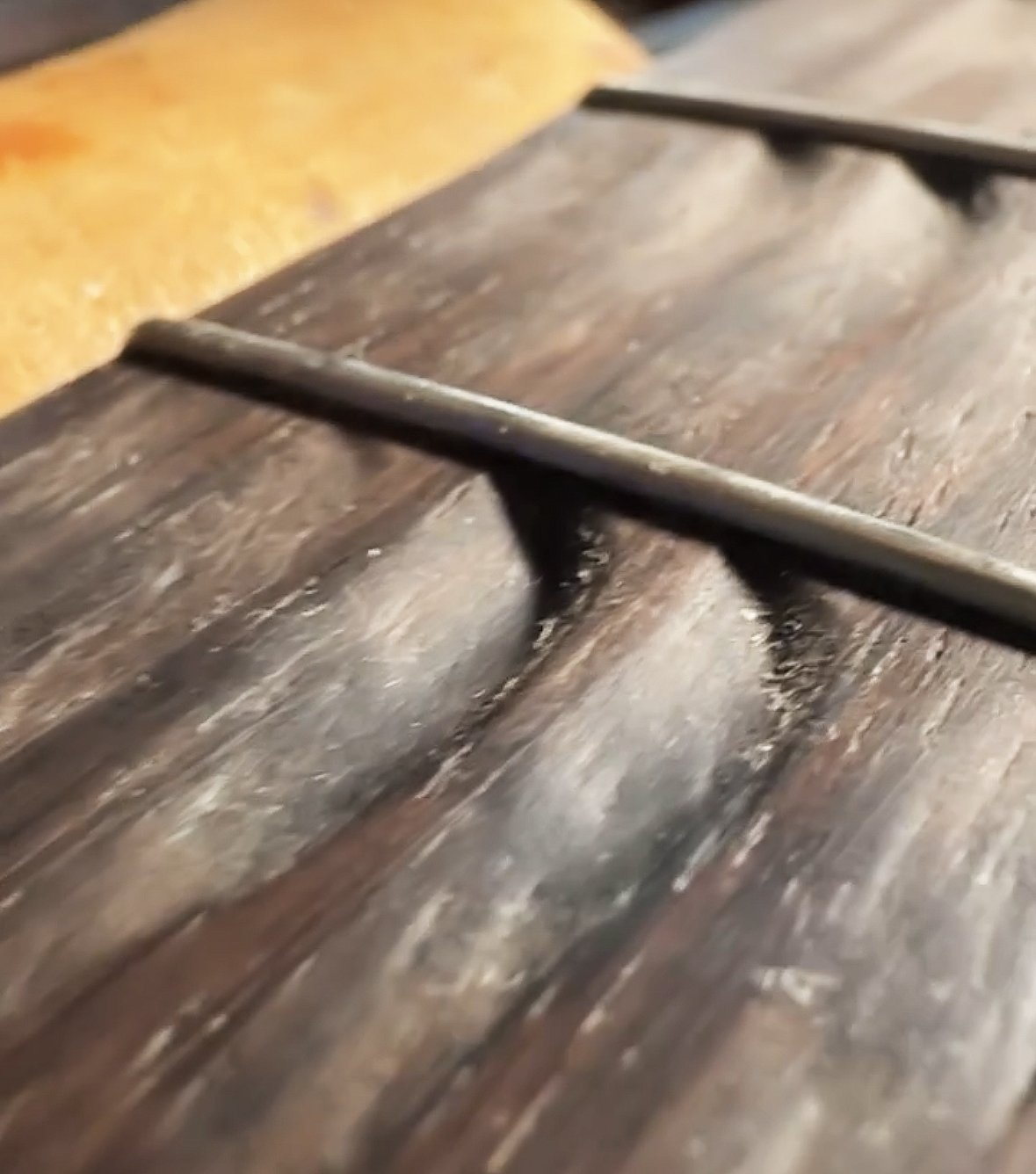Frets
Fret Dress, Fret Level, Full Refret, Fret Ends, Popped Frets, Bar Frets
Fret ends: Fret ends sticking out the side of the fretboard. A humidity issue. The wood shrinks from being too dry but the metal fret stays the same length. Fret ends get filed flush again with the fingerboard edge. Some finish work may be required for a smooth feel.
Popped Frets: When a fret pops out of its slot. Most often the fret gets taken out, re-radiused to match fretboard and glued back in.
Fret Dress/Fret Level: Uneven fret heights that are causing string buzz. Most often needed because of divots from playing wear. Frets are leveled as minimally as possible, re crowned, shaped and polished.
Full Refret:
Frets are pulled, fingerboard leveled, any repairs done, fret slots cleaned, New frets glued in with hide glue, frets dressed, recrowned, shaped and polished. Typically requires a new nut or either the original nut shimmed, or string slots filled and recut.
New frets are your choice of matching original or different fret dimensions (Taller, wider etc).
A new nut and saddle are typically needed, or the original nut can be shimmed or slot filled to save some $.
On vintage instruments, assuming the original nut is still in good shape, I usually prefer to either shim or slot fill the original nut. Either way is totally reversible, and you still have the original nut which matches the instrument.
Bound fretboards are more expensive to refret due to the extra time working over the binding.
Maple fingerboards: Extra $100 for the extra care needed to work on a maple fretboard.
Stainless frets: Extra $100 to pay for my tools that will die doing this job.
Bar Frets: Used on Martin guitars prior to mid 1934. The most difficult fret job of all and far more expensive then modern “T” frets. Requires compression fretting and a lot more extra care in leveling and shaping.

Refretting Martin Guitar using hot hide glue

Refretting fingerboard sanded clean ready for new frets

Very Excessive playing wear to the fingerboard

Badly finished frets- They are in need of a level, recrowning and polish